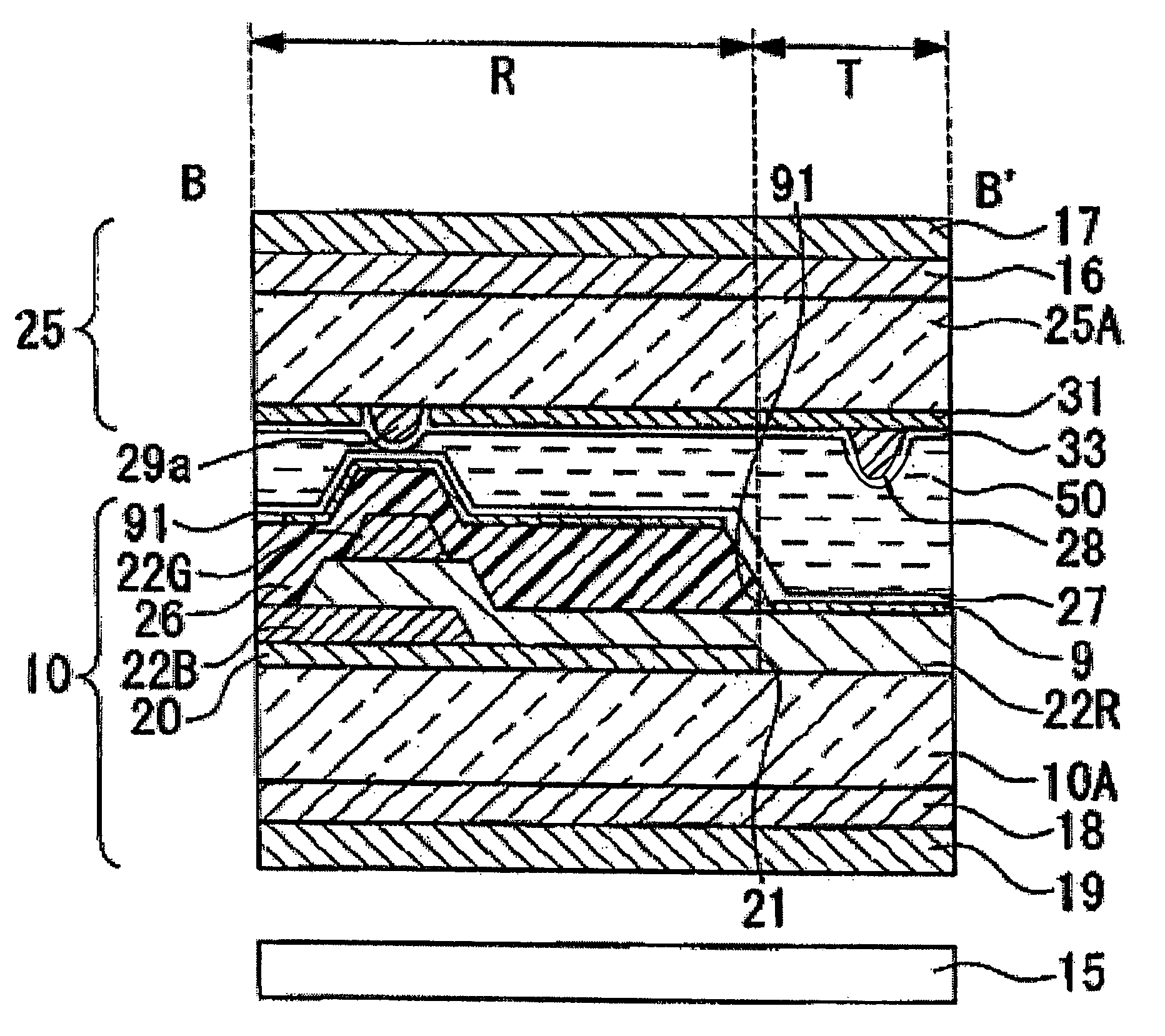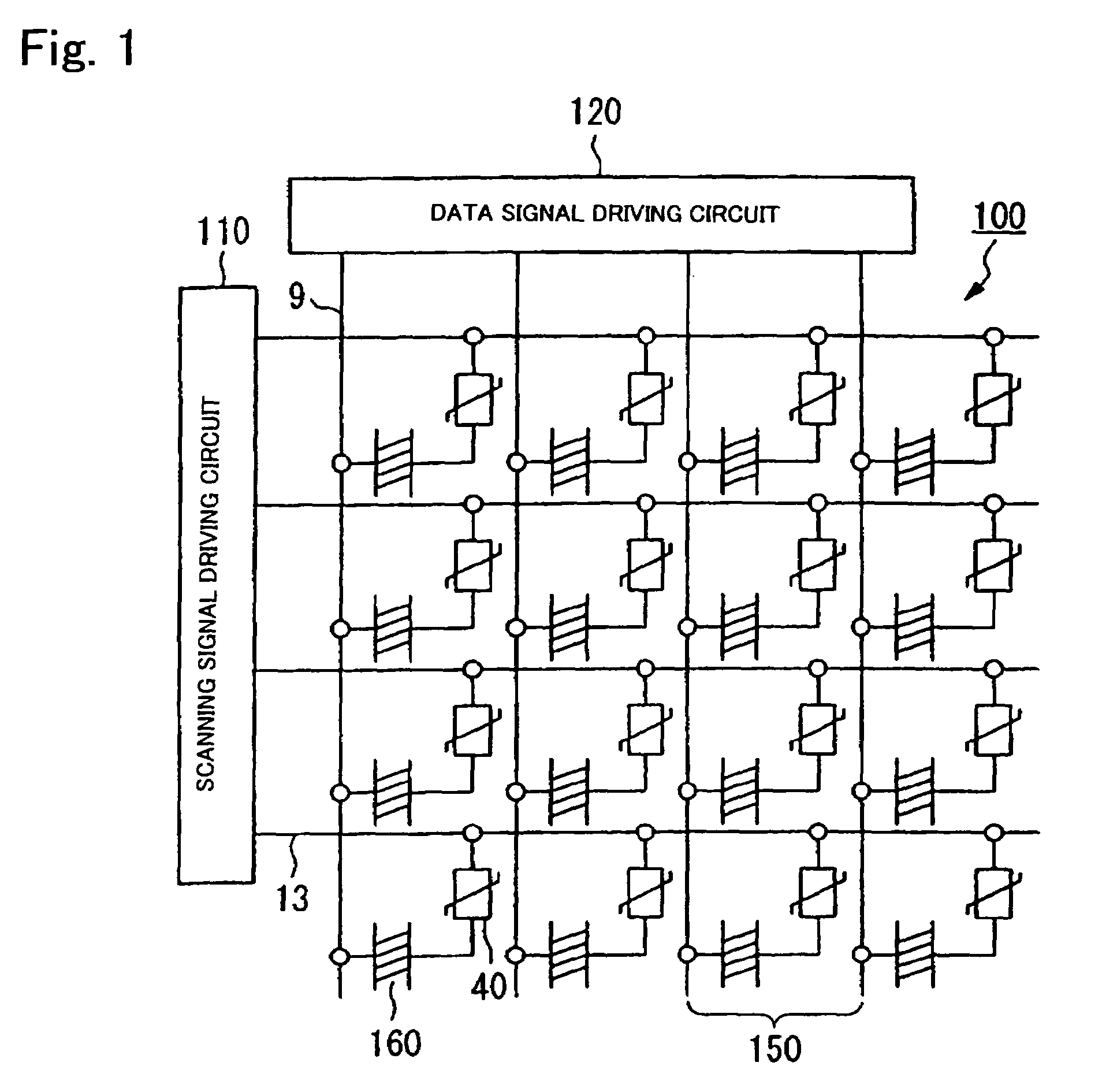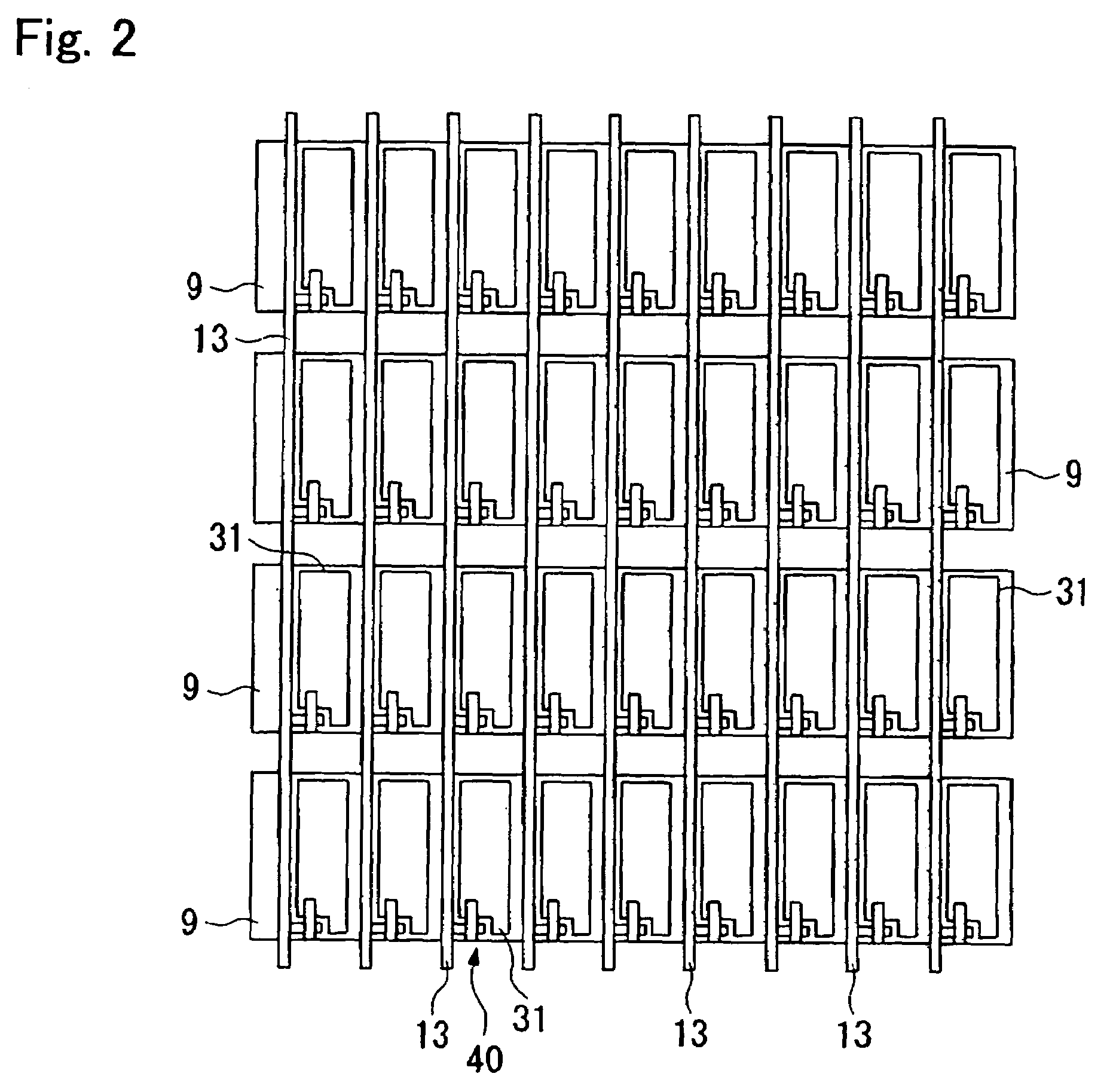Vertical alignment mode LCD with larger dielectric protrusions in transmissive region than in reflection region
a vertical alignment and dielectric protrusion technology, applied in non-linear optics, instruments, optics, etc., can solve the problems of difficult control of the height of these projections, inability to control the direction of liquid crystal molecules' tilt, and large difference in distance between the substrates of the liquid crystal display devi
- Summary
- Abstract
- Description
- Claims
- Application Information
AI Technical Summary
Benefits of technology
Problems solved by technology
Method used
Image
Examples
second embodiment
[0069]The liquid crystal display device 200 is an active matrix transreflective liquid crystal display device including a TFD as a switching element. The liquid crystal display device 200 includes a liquid crystal layer 50 interposed between an upper substrate (element substrate) 25 and a lower substrate (opposing substrate) 10. The liquid crystal layer 50 is composed of a liquid crystal having molecules that are vertically aligned at an initial alignment state and have negative dielectric anisotropy.
first embodiment
[0070]A part of the lower substrate 10 includes a substrate body 10A composed of a transparent material, such as quartz or glass, and a reflective film 20 composed of a metal, such as aluminum and silver, with a high reflectance. The reflective film 20 is formed in a predetermined pattern or, in other words, formed selectively on a reflective display area R. The lower substrate 10 also has a bumpy surface similar to the structure of the first embodiment formed of an insulating film 24 interposed between the substrate body and the reflective film.
[0071]On the reflective film 20 selectively formed on the reflective display area R and on the substrate body 10A of the transmissive display area T, a color filter 22 (22R, 22G, and 22B) is disposed across the reflective display area R and the transmissive display area T. The color filter 22 includes color layers 22R, 22G, and 22B that are red, green, and blue, respectively. The color layers 22R, 22G, and 22B make up dot areas D1, D2, and D...
third embodiment
[0079]As shown in FIG. 6, the liquid crystal display device 400 is an active matrix transreflective liquid crystal display device including a thin-film transistor (TFT) as a switching element. The liquid crystal display device 400 includes a liquid crystal layer 50 interposed between a lower substrate (element substrate) 10 and an upper substrate (opposing substrate) 25. The liquid crystal layer 50 is composed of a liquid crystal having molecules that are vertically aligned at an initial alignment state and have negative dielectric anisotropy.
[0080]A part of the lower substrate 10 includes a substrate body 10A and a reflective film 20a composed of a metal, such as aluminum or silver, with a high reflectance on the substrate body 10A. The reflective film 20a is formed in a predetermined pattern or, in other words, formed selectively on a reflective display area R. In the area without the reflective film 20a, i.e., a transmissive display area T, transparent electrodes 9a are formed w...
PUM
| Property | Measurement | Unit |
|---|---|---|
| thickness | aaaaa | aaaaa |
| thickness | aaaaa | aaaaa |
| area | aaaaa | aaaaa |
Abstract
Description
Claims
Application Information
 Login to View More
Login to View More - R&D
- Intellectual Property
- Life Sciences
- Materials
- Tech Scout
- Unparalleled Data Quality
- Higher Quality Content
- 60% Fewer Hallucinations
Browse by: Latest US Patents, China's latest patents, Technical Efficacy Thesaurus, Application Domain, Technology Topic, Popular Technical Reports.
© 2025 PatSnap. All rights reserved.Legal|Privacy policy|Modern Slavery Act Transparency Statement|Sitemap|About US| Contact US: help@patsnap.com



